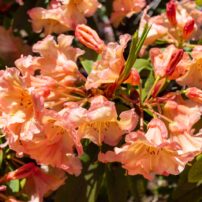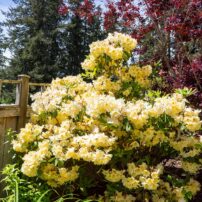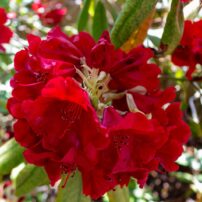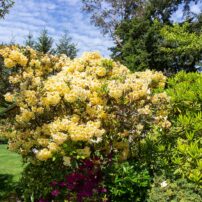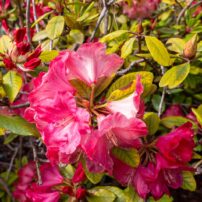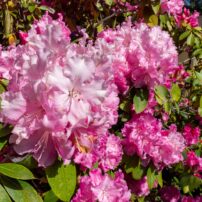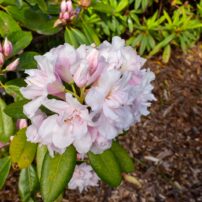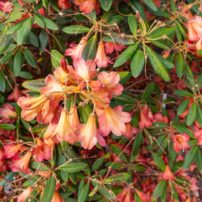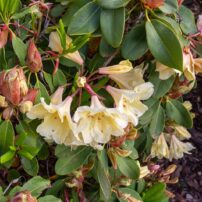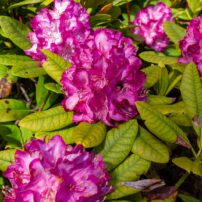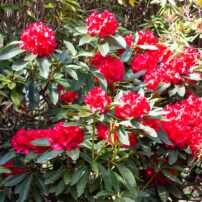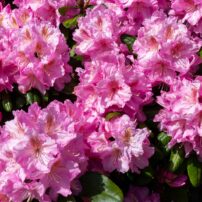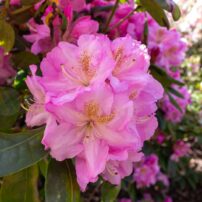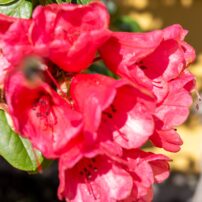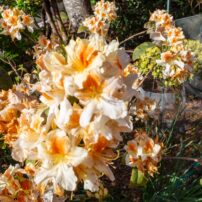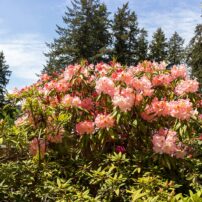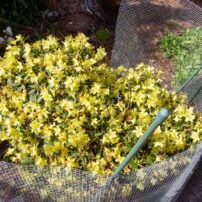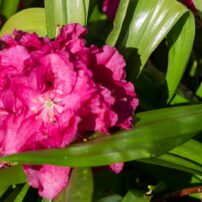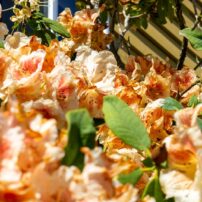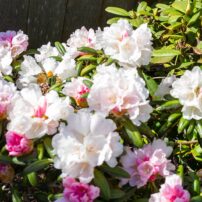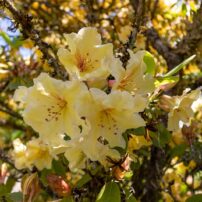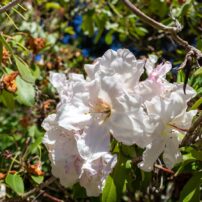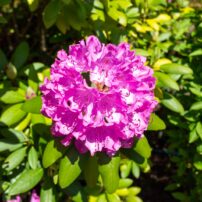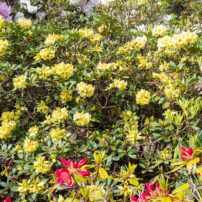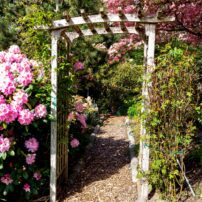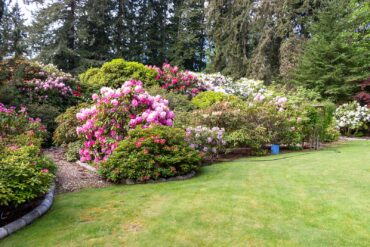 Sometimes we need to see things from a new angle, in order to realize how wonderful something truly is. Charmond Adkins of Poulsbo found this to be true the rhododendron flower.
Sometimes we need to see things from a new angle, in order to realize how wonderful something truly is. Charmond Adkins of Poulsbo found this to be true the rhododendron flower.
“I got interested in rhododendrons about 40 years ago, when I first saw a yellow one,” she says. “Prior to that, I only thought that rhododendrons came in pink, red and white. After seeing a yellow one at a friend’s garden, I was just in awe, and that really started my quest for yellow rhododendrons.”
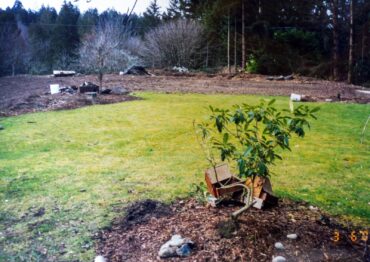
That’s when Adkins realized that she really liked all rhododendrons.
“I guess I just like their big, beautiful blooms that come in all different colors I’ve discovered through the years,” she explains. “And I just think when you see a huge rhododendron bush in full bloom, it has to be one of the most magnificent sights there is. I especially like the ones that are fragrant.”
Adkins comes from a family of gardeners and has always been a gardener.
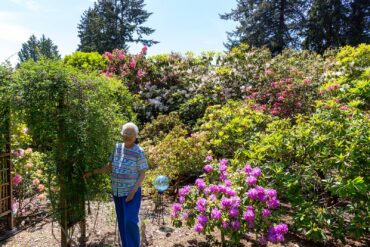
“My family, my mother, immigrated from Scotland in 1911, along with her sisters and brothers, and they were all gardeners. So, I just grew up in that way of doing things,” she says. “My mother, from the time I was probably 11 or 12 years old and could tell a weed from a flower, had me out weeding in the garden.”
Now, in her own garden, Adkins has approximately 150 rhododendrons. These are no ordinary rhododendrons, though. Her flowers have grown absolutely huge. She says that some are “at least 15 feet tall or more.”
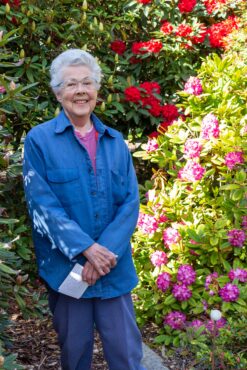
However, Adkins has no secret recipe for growing her beautiful and enormous rhododendrons. “Just watch it and enjoy it grow,” she says.
The rhododendrons vary in their care preferences. “Some thrive in the sun,” she explains. “Some prefer the shade.” It depends on the plant. The native rhododendrons tend to live in “dappled shade, but some are perfectly happy in full sun — not up against your house on a west-facing wall, however. That’s a little too extreme for them,” she says.
Besides sun vs. shade situations, rhododendrons can require fertilization. “There are fertilizers that are formulated specifically for rhododendrons,” Adkins says. “Generally, something high in nitrogen.”
Adkins’ best advice for gardeners is to personalize and experiment.
“Every gardener, I’m sure, has their own formula for what they think works for the rhododendrons and their other flowers. It’s just kind of a hit-and-miss thing,” she says. “You try to read articles that other gardeners write and draw from their information and their experience, and put it all together and hope it works in your yard, too.”
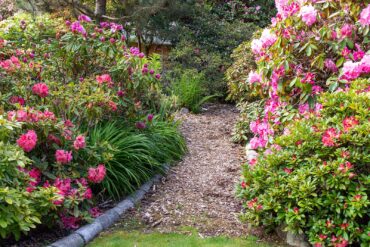
Adkins’ garden and her rhododendrons keep her going. “(Gardening is) what helps me get out of bed every morning and face the day. I look forward to every spring,” she says. “Every winter, I think, ‘Oh, my. I don’t know if I can do this another spring.’ Then, spring comes and I’m out there, looking and peeking under the leaves, here and there and elsewhere, to see what came up.”
Rhododendrons bring Adkins joy and motivation — and it all started with that one, yellow rhododendron.




